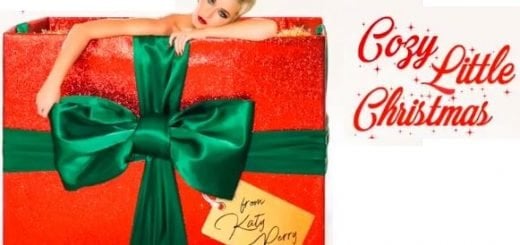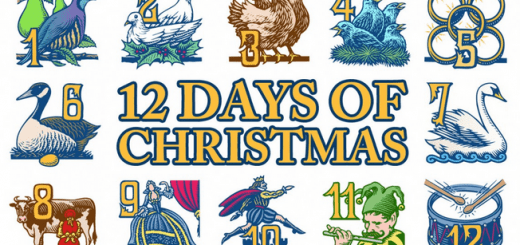50 Fascinating Facts About Christmas Songs
Dancing through the vibrant and cozy tapestry of the holiday season, Christmas songs have universally enveloped our festivities in a warm, melodic embrace. From the nostalgic strains of “White Christmas” to the ebullient tones of “Jingle Bell Rock,” these timeless tunes have perennially rekindled our spirits, sharing tales of snow-draped landscapes, jubilant celebrations, and heartwarming yuletide narratives.
But beneath the surface of these cherished melodies lie fascinating stories, peculiar anecdotes, and unexpected journeys that have, until now, hummed along unnoticed. “Deck the Halls with Boughs of Trivia” invites you on a sleigh ride through a winter wonderland sprinkled with astonishing facts and delightful tidbits about the songs that have soundtracked our Decembers for generations.
Suspend your disbelief and ready your curiosity, for as the bells jingle and the choirs harmonize, we’ll unwrap the enchanting secrets and untold tales that linger within the notes of our beloved holiday anthems. Here are some intriguing tidbits about various holiday tunes:
1. “Jingle Bells” Wasn’t Originally a Christmas Song
- “Jingle Bells,” written by James Lord Pierpont in 1857, was intended for Thanksgiving, not Christmas. Additionally, it was intended to be a drinking song.
2. “White Christmas” Holds a World Record
- As mentioned earlier, Bing Crosby’s “White Christmas” is recognized by the Guinness World Records as the best-selling single of all time, with over 50 million copies sold worldwide.
3. “Do They Know It’s Christmas?” Was Recorded for Charity
- The song “Do They Know It’s Christmas?” was recorded by Band Aid, a supergroup created by Bob Geldof and Midge Ure, to raise funds for famine relief in Ethiopia in 1984. The song included vocals from various famous artists, including Bono, Phil Collins, and George Michael.
4. Mariah Carey Wrote “All I Want for Christmas Is You” Quickly
- Mariah Carey and her co-writer, Walter Afanasieff, reportedly wrote “All I Want for Christmas Is You” in just 15 minutes. The song has since become one of the most popular modern Christmas tracks.
5. “The Christmas Song” Was Written During a Heatwave
- Mel Tormé and Bob Wells wrote “The Christmas Song” (commonly known as “Chestnuts Roasting on an Open Fire”) during a blistering hot summer day in 1945, as a way to “stay cool by thinking cool.”
6. “Silent Night” Was Translated from German
- “Silent Night,” originally “Stille Nacht” in German, was written by Franz Xaver Gruber and Joseph Mohr. It was performed for the first time on Christmas Eve in 1818 and has been translated into numerous languages.
7. Rudolph Was Almost Named Something Else
- When Robert L. May was tasked with creating a Christmas story and coloring book for Montgomery Ward department stores in 1939, he considered naming the now-famous reindeer “Rollo” and “Reginald” before settling on “Rudolph.”
8. “Hark! The Herald Angels Sing” Originally Had Different Music
- The music we associate today with “Hark! The Herald Angels Sing” was not the original tune. The lyrics by Charles Wesley were initially set to a different melody. The current and widely recognized music was composed by Felix Mendelssohn, and it was William H. Cummings who later adapted and joined the lyrics and the melody together.
9. “Santa Claus Is Coming to Town” Was Written in a Short Time Frame
- “Santa Claus Is Coming to Town” was written by J. Fred Coots and Haven Gillespie and was a hit right away. Reportedly, Coots came up with the melody in just ten minutes, and the song was an instant hit when it was first performed on Eddie Cantor’s radio show in 1934.
10. The Pogues’ “Fairytale of New York” Is a Massive Hit in the UK
- “Fairytale of New York” by The Pogues and Kirsty MacColl has never hit number one on the UK charts but is still one of the most played Christmas songs in the UK. It has re-entered the UK Top 20 chart every year since 2005.
11. “I Saw Mommy Kissing Santa Claus” Controversy
- “I Saw Mommy Kissing Santa Claus” sparked controversy among some religious groups when it was first released in 1952. They thought the song mixed sexual imagery with Christmas. The ban was lifted when 13-year-old singer Jimmy Boyd visited the Boston Archdiocese to explain the song.
12. “O Tannenbaum” Isn’t Originally About Christmas
- “O Tannenbaum” (O Christmas Tree) did not start as a Christmas song. The original German folk song discussed the evergreen as a symbol of constancy and faithfulness, and it wasn’t associated directly with Christmas.
13. “Feliz Navidad”’s Bilingual Appeal
- “Feliz Navidad” by José Feliciano was one of the earliest popular Christmas songs to include both Spanish and English lyrics, promoting a bilingual holiday message.
14. “Jingle Bell Rock” Connection to “Rock Around the Clock”
- “Jingle Bell Rock” was co-written by Jim Boothe and Joe Beal. Jim Boothe was a publicist who had previously worked with Max Freedman, the co-writer of “Rock Around the Clock.”
15. “Happy Xmas (War Is Over)” Features a Harlem Community Choir
- John Lennon and Yoko Ono’s “Happy Xmas (War Is Over)” features the Harlem Community Choir. The children’s vocals were meant to add poignancy to the song’s message of peace.
16. “Silver Bells” Was Initially “Tinkle Bells”
- “Silver Bells” was first written as “Tinkle Bells.” When composer Jay Livingston’s wife pointed out the slang meaning of “tinkle,” the title and lyrics were changed.
17. “Baby, It’s Cold Outside” Was a Call-and-Response Duet
- “Baby, It’s Cold Outside” was written by Frank Loesser as a playful call-and-response duet for him and his wife to perform at parties. It wasn’t originally intended as a Christmas song.
18. Twisted Sister’s Christmas Album
- Heavy metal band Twisted Sister released a Christmas album titled “A Twisted Christmas” (2006), which features hard-rock renditions of Christmas classics.
19. “Do You Hear What I Hear?” Inspired by the Cuban Missile Crisis
- “Do You Hear What I Hear?” was written by Noël Regney and Gloria Shayne Baker during the Cuban Missile Crisis in 1962. The song was a prayer for peace during the tense time between the U.S. and the USSR.
20. “Christmas in Hollis”’ Connection with a Classic Movie
- Run-D.M.C.’s “Christmas in Hollis” was notably featured in the movie “Die Hard.” The song plays as Bruce Willis’ character enters Nakatomi Plaza, creating an unforgettable juxtaposition between holiday cheer and action thriller.
21. Bing Crosby’s Reluctance for “White Christmas”
- Bing Crosby was not immediately impressed with “White Christmas.” Reportedly, when Irving Berlin played it for him, Crosby’s response was nonchalant, with something like “I don’t think we have any problems with that one, Irving.”
22. World War II and “Have Yourself a Merry Little Christmas”
- The original lyrics to “Have Yourself a Merry Little Christmas,” written for the film “Meet Me in St. Louis,” were considered too melancholy for the film’s star, Judy Garland. The lyrics were reworked to be a bit more uplifting, particularly during the difficulties of World War II.
23. “Christmas Wrapping” – A Christmas Rap Song
- “Christmas Wrapping” by The Waitresses is among the relatively few Christmas songs that use a spoken word, rap-like style, offering a distinctive mix of post-punk and festive cheer.
24. Elvis’ Controversial Christmas Album
- Elvis Presley’s 1957 Christmas album was controversial at the time of its release. Some critics panned it for its rock-and-roll take on revered Christmas songs, and it was even banned by some radio stations.
25. “Grandma Got Run Over by a Reindeer”
- “Grandma Got Run Over by a Reindeer” was originally sung by Dr. Elmo Shropshire in 1979 and was a dark comedy and novelty song that became unexpectedly popular, being a counter-culture holiday hit.
26. The Surprising Writer of “Mary, Did You Know?”
- “Mary, Did You Know?” a modern Christmas classic, was co-written by Mark Lowry, a comedian known for his work with the Gaither Vocal Band, showing his versatility in both humor and poignant religious writing.
27. The Salvation Army Connection in “Silver Bells”
- “Silver Bells” was inspired by the Salvation Army bell ringers who stand outside of department stores during the holiday season. It was initially titled “Tinkle Bells” until the writers realized that “tinkle” had another, less suitable meaning.
28. Eartha Kitt’s Multiple Versions of “Santa Baby”
- Eartha Kitt, who first recorded “Santa Baby” in 1953, recorded new versions of the song later in her career, adding new lists of gifts from Santa that reflected the times, including in 1963 and 2001.
29. Multiple Meanings in “12 Days of Christmas”
- Some believe that “The 12 Days of Christmas” was written as a catechism song for young Catholics in England when they were not openly allowed to practice their faith. Each element of the song supposedly represents a religious tenet, though this theory is widely debated.
30. The Speedy Success of “Little Drummer Boy”
- “The Little Drummer Boy” was written in 1941 and became massively popular in a remarkably short amount of time, being translated into seven languages and performed by the Trapp Family Singers (of “Sound of Music” fame) by 1955.
31. “Last Christmas” Charitable Earnings
- Wham!’s “Last Christmas” was kept off the top spot on the UK charts by Band Aid’s “Do They Know It’s Christmas?” (in which George Michael also sang). Wham! donated their royalties from the song to Ethiopian famine relief as well.
32. Odd Fact About “The Christmas Shoes”
- “The Christmas Shoes,” a song about a boy buying shoes for his dying mother, has been both praised for its emotional storytelling and criticized for its sentimentality. It’s been dubbed one of the saddest Christmas songs ever, which is a contrast to the generally jolly nature of the holiday genre.
33. “Let It Snow” Misconception
- “Let It Snow! Let It Snow! Let It Snow!” is often thought of as a Christmas song, but it doesn’t mention the holiday at all. It’s merely a winter song, lamenting the cold weather but celebrating staying cozy indoors.
34. Not-So-Silent “Silent Night”
- During the Christmas truce of 1914 in World War I, “Silent Night” (“Stille Nacht” in German) was sung across the trenches since it was one of the few Christmas songs that soldiers on both sides knew.
35. “Carol of the Bells” – A New Year’s Carol?
- “Carol of the Bells,” although widely associated with Christmas, was originally a Ukrainian folk song called “Shchedryk,” which told the story of a swallow’s journey and was associated with the coming New Year, which in pre-Christian Ukraine was celebrated with the arrival of spring in April.
36. Taylor Swift’s “Christmas Tree Farm”
- Taylor Swift’s song “Christmas Tree Farm” has a personal connection. She actually grew up on a Christmas tree farm in Pennsylvania, and her childhood memories inspired the cheerful and festive song.
37. Thurl Ravenscroft and “You’re a Mean One, Mr. Grinch”
- The singer of “You’re a Mean One, Mr. Grinch,” Thurl Ravenscroft, was uncredited in “How the Grinch Stole Christmas.” Dr. Seuss later wrote letters to columnists to make sure Ravenscroft received his due recognition.
38. “Here Comes Santa Claus” Was Inspired by a Parade
- Gene Autry wrote “Here Comes Santa Claus” after being inspired by the annual Hollywood Christmas Parade, specifically, the shouts of children watching Santa Claus pass by.
39. Strange Covers of “Santa Claus is Coming to Town”
- “Santa Claus is Coming to Town” has been covered in many genres, from the classic Bruce Springsteen version to a heavy metal cover by Alice Cooper.
40. “Go Tell It on the Mountain” and the Civil Rights Movement
- “Go Tell It on the Mountain,” a traditional Christmas spiritual song, was also popularized as a Civil Rights anthem, demonstrating the melody’s versatility and emotional power.
41. “12 Days of Christmas” Prolific Gifts
- If you were to receive all of the gifts in “The 12 Days of Christmas,” you would have 364 presents. This incorporates each repeating gift in the cumulative song.
42. “Wonderful Christmastime” Synth Pioneer
- Paul McCartney’s “Wonderful Christmastime” is notable for its pioneering use of synthesizers, providing a different sound compared to traditional Christmas songs.
43. Handel’s “Messiah” Charity Performances
- Handel’s “Messiah,” although not a song but an oratorio often associated with Christmas, was initially performed for Easter and was used to free 142 men from debtor’s prison in a historic charity concert.
44. Controversial Banning of “I Am Santa Claus”
- Bob Rivers’ “I Am Santa Claus,” a parody of Black Sabbath’s “Iron Man,” was banned by some radio stations despite its popularity due to its irreverent take on Santa’s persona.
45. Oddities in “I Want a Hippopotamus for Christmas”
- The song “I Want a Hippopotamus for Christmas” was actually a massive hit for 10-year-old star Gayla Peevey in 1953, which led to her being gifted an actual hippopotamus that was then donated to a zoo.
46. Jimmy Boyd’s Christmas Song Trilogy
- Jimmy Boyd, famous for “I Saw Mommy Kissing Santa Claus,” recorded a trilogy of songs. After the success of the first, he recorded “I Saw Mommy Do The Mambo (With You Know Who)” and “I Saw Grandma Rock ’n’ Rolling Santa Claus.”
47. The Origins of “O Holy Night”
- “O Holy Night” was composed by Adolphe Adam in 1847 and has the distinction of being the first Christmas song ever broadcast on the radio, played on a violin in 1906 by Reginald Fessenden.
48. “This Christmas” and Its Soulful History
- “This Christmas,” first recorded by Donny Hathaway and subsequently covered by various artists, has become an R&B Christmas standard, and its success has led to it often being referred to as Donny Hathaway’s song despite its various renditions.
49. Bing Crosby’s Double Christmas Hit Album
- Bing Crosby’s album “Merry Christmas,” featuring both “White Christmas” and “Silent Night,” holds the distinction of being the top-selling Christmas album of all time.
50. “Jingle Bells” Space History
- “Jingle Bells” was the first song broadcast from space. During a Gemini 6 mission in 1965, astronauts Tom Stafford and Wally Schirra played a prank involving a harmonica and a sleigh bell, pretending to spot Santa Claus.








